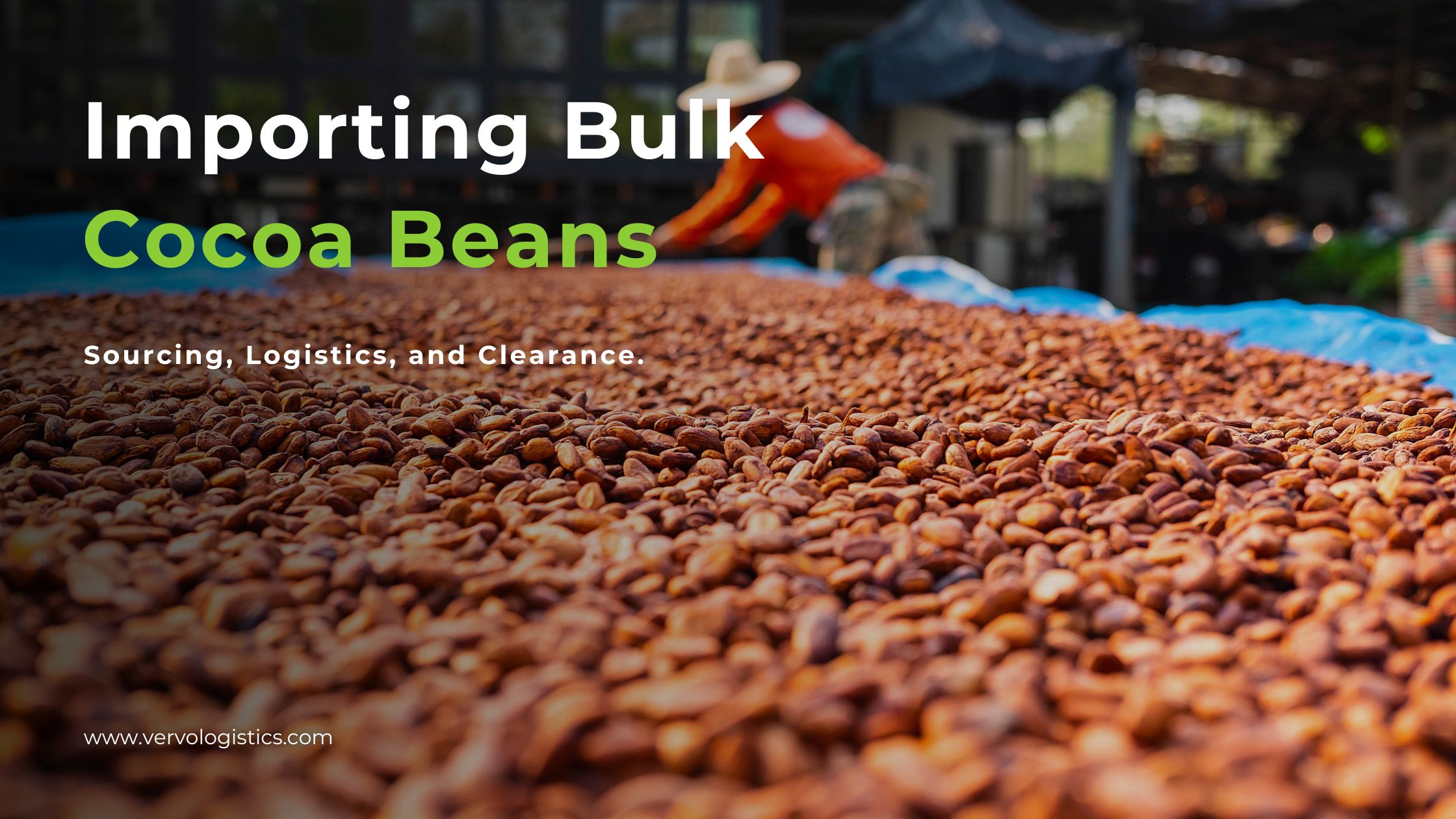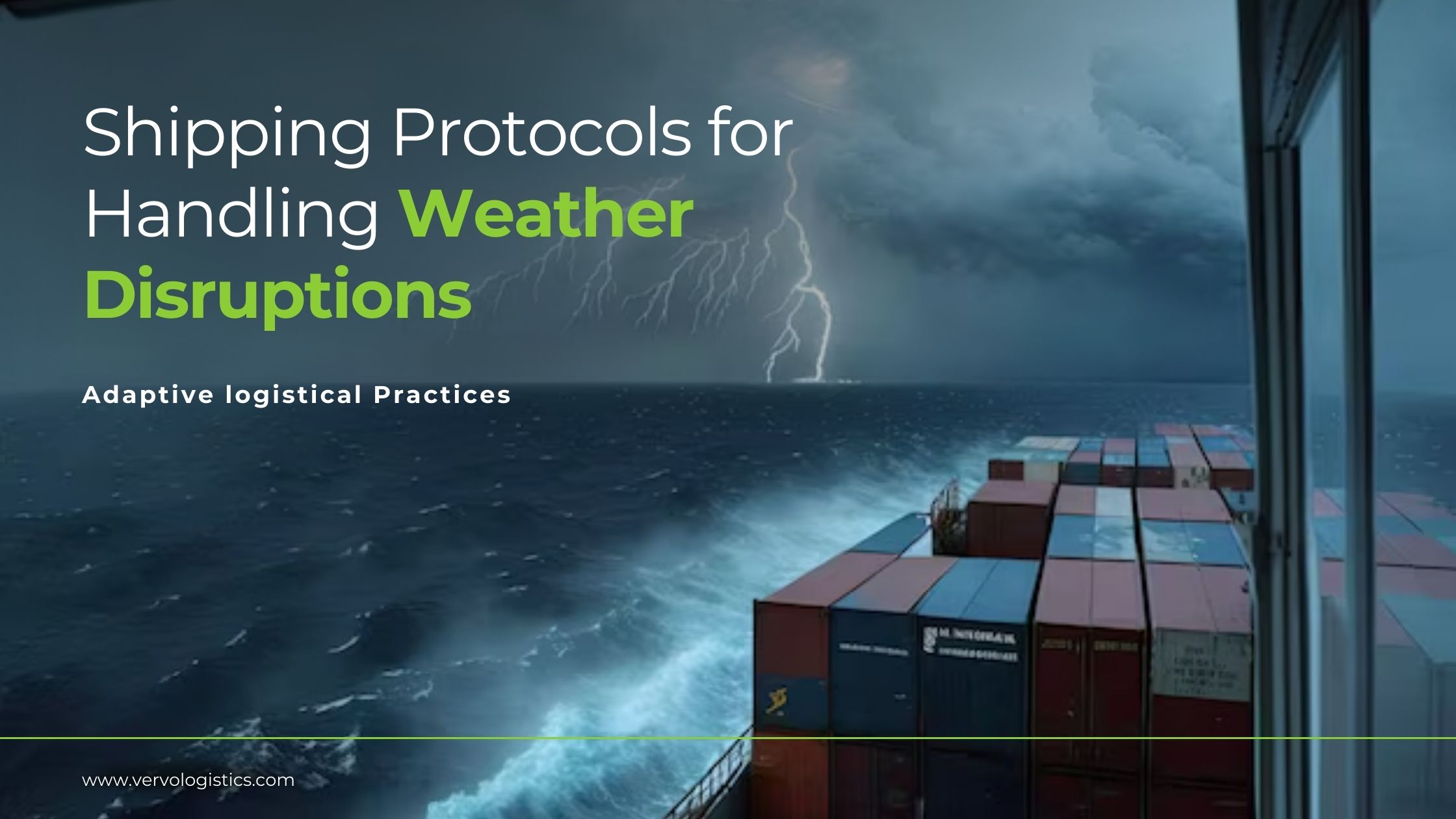Though the UAE produces some cereal crops domestically, it relies heavily on imports to meet local demand. In 2022, 1.61 billion worth of cereals such as wheat, rice, and corn were imported into the UAE; most of them were delivered by ocean.
However, not all cereal shipments arrive by sea in prime conditions, as any break in the process can lead to spoiled cargo that disrupts the whole supply chain.
So, what does it take to successfully deliver cereal crops by sea?
Each step—from container selection to in-transit monitoring until offloading in the UAE and cargo clearance—contributes to ensuring that the grains arrive in optimal condition.
This article dives into the granular details of best practices for the sea transport of cereal crops.
Pre-Transportation Preparation: Vessel and Container Selection
The type of cereal, climate, and length of journey should inform the vessel or container selection. At Vervo Middle East, we don't leave it to chance, our team researches all options thoroughly.
- Assessing Cargo Characteristics:
Cereal grains come with a varied moisture content and sensitivity to environmental conditions. This cargo type demands a tailored approach to shipping.
For instance, for robust grains like wheat, a standard bulk carrier may suffice, offering economies of scale for large shipments. The hardy wheat may weather conditions that could degrade the more delicate barley.
While refrigerated transport may be advisable for durable processed cereals like wheat flour for long journeys through hot or humid climates to prevent moisture absorption by adding desiccant bags inside containers.
However, more sensitive cereals like maize might necessitate the controlled environment of a container ship in terms of humidity and ventilation, where individual units can be optimized for the cargo's needs.
Recognizing these nuances is the first step in selecting the appropriate vessel.
The length of the journey is also important! For instance, for whole grain shipments over long distances or through hot climates, temperature control is essential to preventing spoilage. The precisely adjustable air circulation in these containers prevents condensation buildup and controls humidity.
For short trips or more processed cereals, basic shipping containers on container vessels often suffice. But we never assume—our transportation experts decide on optimal vessel ventilation, humidity controls, and container preparations for your specific cereal cargo.
- Container Selection:
The choice between bulk, refrigerated, or ventilated containers is more than a matter of scale. Not all containers are created equal when it comes to transporting cereal crops. The standard dry bulk container may suffice for short trips in mild climates.
However, for longer journeys or routes passing through extreme conditions, specialized containers with ventilation capabilities, climate control, and refrigeration (reefer containers) become indispensable. These features are not luxuries; they are safeguards against the moisture and temperature variations that can lead to spoilage and infestation.
- Vessel Type:
The same rule is applied when choosing the vessel. Bulk vessels are often the go-to for massive, single-commodity, homogeneous shipments, offering direct loading and unloading mechanisms. However, container ships offer modular flexibility, which is critical for mixed batches of cereal cargo or smaller volumes and when precise climate control is paramount.
The decision also impacts loading and unloading efficiencies, a factor that can significantly affect the end-to-end timeline. The logistical implications of each, from stowage to port infrastructure compatibility, must be weighed against the shipment's profile.
The optimal vessel and container keep your cereal dry, pest-free, and stable in transit. Our team meticulously picks the perfect ride that aligns with your cereal crop's needs.
- Climate Control:
Beyond the choice of container is the imperative of environmental management within it. Temperature fluctuations and humidity are the twin adversities that can deteriorate cereal quality; they should always be balanced.
Refrigerated or "reefer" containers with adjustable climate settings are necessary for routes traversing hot zones or for delicate grains that require stable conditions. ensuring the grains are not subjected to the stress of thermal expansion and contraction, which can invite moisture and contaminants.
- Container Lining and Preparation:
The container’s interior preparation is often an undervalued facet of pre-transportation planning. Liners, often made of polyethylene or polypropylene, act as a moisture barrier, serving as a deterrent to pests and contaminants.
The precise installation of these liners, ensuring they are intact, properly secured, and free from tears and punctures, is as crucial as the container's inherent features. Furthermore, the cleanliness of the container, devoid of residual odors, debris, or substances that could taint the cereal, is a non-negotiable prerequisite.
This stage, though pre-transport, is where the foundation for a successful cereal shipment is laid from the moment they leave the exporter to their arrival in the UAE.
Preparing the Cargo Hold or Container
The sanctity of the cargo hold or container is pivotal to the integrity of cereal crops during their maritime journey. Preparing this environment demands attention to detail and an understanding of the specific requirements of the cargo, ensuring the cereals arrive in the UAE in pristine condition.
- The Imperative of a Pristine Environment:
Prior to loading, the cargo space must be subjected to a thorough cleaning regimen. This is not merely a cursory sweep but a comprehensive elimination of residues, pests, and any lingering odors that could compromise the quality of the cereals. Also, any remnants from prior cargo or contaminants can ruin an entire cereal shipment.
The use of industrial-grade vacuum systems and disinfectants may be necessary to meet the stringent standards required for food-grade shipments. A contamination-free hold or container is the first line of defense against the issues that can arise from impurities.
- The Role of Dunnage:
Dunnage serves multiple critical functions, particularly in areas prone to temperature fluctuations. It acts as a buffer between the cargo and the hold or container walls, guarding against moisture ingress, which is a common culprit for spoilage and mold growth.
Materials such as wood pallets, lining sheets, plastic films, desiccant bags, foam pads, and absorbent mats are strategically placed to shield the cereals from water damage, absorb condensation, and prevent spoilage-inducing moisture accumulation.
The selection of dunnage is a precise science, balancing the need for moisture protection with the requirement for air circulation.
- Packaging for Preservation:
Beyond dunnage, the packaging of the cereal itself is a vital aspect of preparation.
Using high-quality, breathable materials can prevent moisture buildup while maintaining adequate airflow. Specially designed bags or containers that include moisture barriers and are resistant to punctures and tears should be employed.
For instance, we first line shipping containers with moisture-barrier sheets. Then we place cereals in multi-walled bags with desiccants between each layer. Finally, we secure bagged cereals on raised pallets, allowing air circulation on all sides.
These packaging solutions not only secure the cereals from the risks of sea transport but also serve to preserve their freshness and extend their shelf life.
- Stabilizing the Load:
Once the cereals are packaged and the dunnage is in place, securing the load is the final step. This involves the arrangement of the cereal packages to prevent shifting and compression, which can strain packaging, crush cereals, and compromise aeration.
The use of strapping, lashing, and bracing systems ensures that the cargo remains stationary within the container, even as the ship navigates through rough seas.
Proper load distribution and restraints like stretch wraps or tie-downs keep cargo intact. We must also implement fumigation protocols and insect monitors to deter cereal-loving pests.
- Moisture Control and Aeration:
The goal is to maintain an environment conducive to the preservation of cereal grains.
We consider your cargo's needs: whole grains require meticulous moisture control for freshness, while durable processed cereals need less.
As ventilation for aeration and preventing condensation buildup is essential either way, there should be a balance between moisture control and proper aeration. This is achieved through well-placed ventilation systems within the cargo hold or through the use of containers designed with passive ventilation features.
These systems must be checked for functionality, as proper air circulation is a deterrent to the development of hotspots and condensation, ensuring the cereals remain dry and less susceptible to spoilage.
Sea Shipping Services of Cereal Crops in the UAE
At Vervo Middle East we help you adhere to these best practices for sea transport of cereal crops.
Our expert logistics team ensures that the cereal crops reach the UAE in optimal condition, ready for market or further processing.
Describe to us your cereal load and receive a free customized shipping quote today!
Request Your FREE Customized Shipping Quote Now.
Or reach out to our logistics team via:
Email:
Phone: +971508723352




